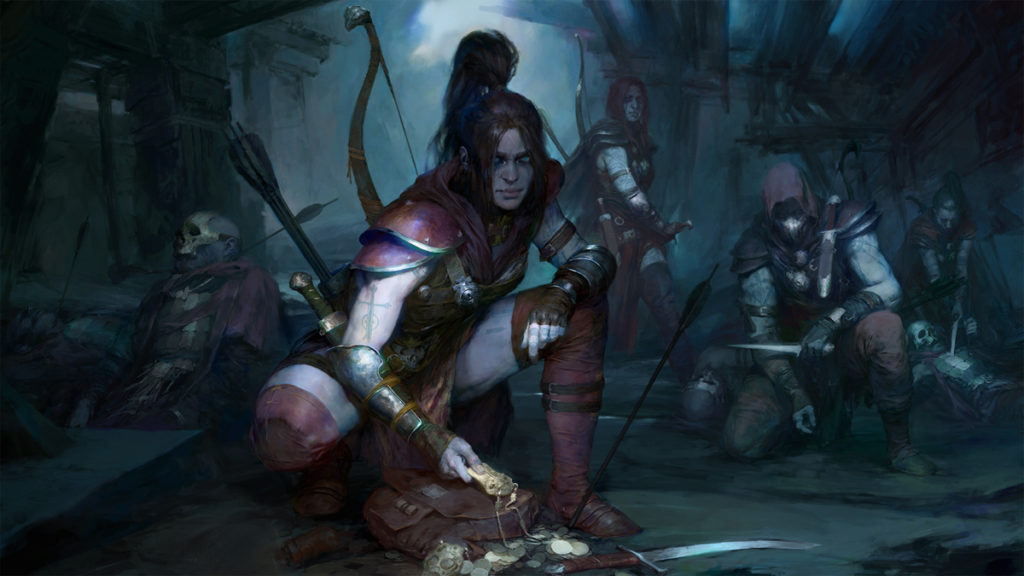
ASUS has shared what it claims are the best graphics settings for running Diablo IV on the ROG Ally, its $699.99 and $599.99 gaming handheld with AMD Ryzen Z1 processors. The device seems to have a hard time coping with a long list of graphics options in Blizzard’s ARPG, including Soft Shadows, Fur Quality, and Screen Space Reflections.
Diablo IV Optimized Graphics Settings for ASUS ROG Ally
These are the settings we recommend for the best-looking experience with solid performance on the ROG Ally:
- Resolution: 1920×1080, the native resolution of the ROG Ally’s display.
- Sharpen Image and Font Scale: Set to taste. If you use FSR, like we recommend below, this sharpening won’t take effect, but if you do choose to use sharpening in another mode, we recommend turning it down fairly low to avoid sharpening artifacts. Font scaling will also be dependent on your eyes – we found the default Medium fine even on the Ally’s compact screen, but you can raise it if you want.
- FidelityFX Super Resolution 2: Quality. FSR renders the game at a lower resolution, then scales it up using intelligent algorithms to get you better performance with great image quality. For our optimized settings, we recommend Quality for best results, though you can turn it down to Balanced for even more performance at the expense of some fidelity.
- Max Foreground FPS: Set to taste. This framerate limiter can help keep motion looking smooth and consistent, though we find it isn’t usually necessary. If you want a fully uncapped framerate, crank this to the max and leave it alone.
- Texture Quality: High. This has a massive effect on the graphical detail in the game, and since it’s mostly VRAM-dependent, we can safely turn this up to High for much better looking graphics without a big hit to performance. Ultra, however, is not advised since it requires a lot of VRAM and is a minor increase in fidelity over High.
- Anisotropic Filtering: 8x. This helps make textures look sharper when viewed at an angle, giving a better-looking image without a huge performance cost. We recommend 8x for the Ally.
- Shadow Quality: Low. As the name suggests, this determines the resolution and quality of the shadows in the game. While increasing this setting usually has a marked improvement in fidelity (for a big performance cost), Diablo’s top-down view makes shadow quality less noticeable, so keeping this at Low gives a nice performance boost without hampering visual quality very much.
- Dynamic Shadows: On. Dynamic Shadows determines whether moving objects, like your character, have a shadow at all. Turning this on does bring performance down, but also makes things look much more realistic, so its one of the few settings we recommend turning up for visual quality.
- Soft Shadows: Off. This makes shadows look softer and more realistic, but we couldn’t see a very noticeable difference, so turn this off for a small boost in performance.
- Shader Quality: Low. Similarly, Shader Quality didn’t seem to affect the graphics very much in our tests, so we kept it at Low for the performance benefits.
- SSAO Quality: Low. Ambient Occlusion (or SSAO) adds lots of smal shadows in areas where objects meet, giving the world more realistic depth. In most games, this makes a huge visual difference with a large performance impact, but in Diablo IV, its effect is much more subtle, meaning we can easily lower this and gain back some performance.
- Fog Quality: Low. This determines the amount and quality of fog effects, and since it isn’t a super noticeable difference, we recommend keeping it at Low to gain back a few frames.
- Clutter Quality: Low. This controls the density of things like grass on the ground, and the distance at which they’re rendered. While you can get a performance boost from turning it off, the game looks much nicer with a bit of grass on screen, so we recommend keeping it at Low.
- Fur Quality Level: Low. Turning up the Fur Quality didn’t seem to impact visuals very much, so we left it on Low.
- Water Simulation Quality: High. This adds more detail to water, but it’s more VRAM-dependent than GPU-dependent, so you can safely go with High.
- Anti-Aliasing Quality: High. Anti-Aliasing smooths out jagged edges for a less pixelated image, and since High didn’t seem to affect performance too heavily, we turned it up for improved visual quality.
- Geometric Complexity: Medium. This determines the detail of objects as they get farther away. We recommend Medium to get a good balance between fidelity and performance.
- Terrain Geometry Detail: Low. We didn’t see a large impact to visuals turning this up, so we’ve left it at Low.
- Physics Quality: High. This improves the realism of destructible objects, and while Low looks quite good, it’s more CPU-dependent, which means you can turn it up.
- Particles Quality: Medium. Particle quality determines how many particles are spawned, like when its snowing. Medium provided a noticeable boost to particles compared to low, while still providing good performance.
- Reflection Quality: Low. We’re turning off screen space reflections below, so this setting may not matter very much with our settings, but we’ve kept it at Low to keep performance up.
- Screen Space Reflections: Off. This controls the presence of certain reflections, and while it looks nice, it comes with too large a performance hit to recommend here, so we’ve turned it off.
- Distortion: On. This adds a distortion affect to fires and the like, just like you see in real life. It’s a cool effect to leave on provided you can hit your performance targets.
- Low FX: On. Turning this on lowers the quality of certain particle effects, but it’s not super noticeable on the Ally’s compact screen, and can improve performance, so we recommend turning it on.
